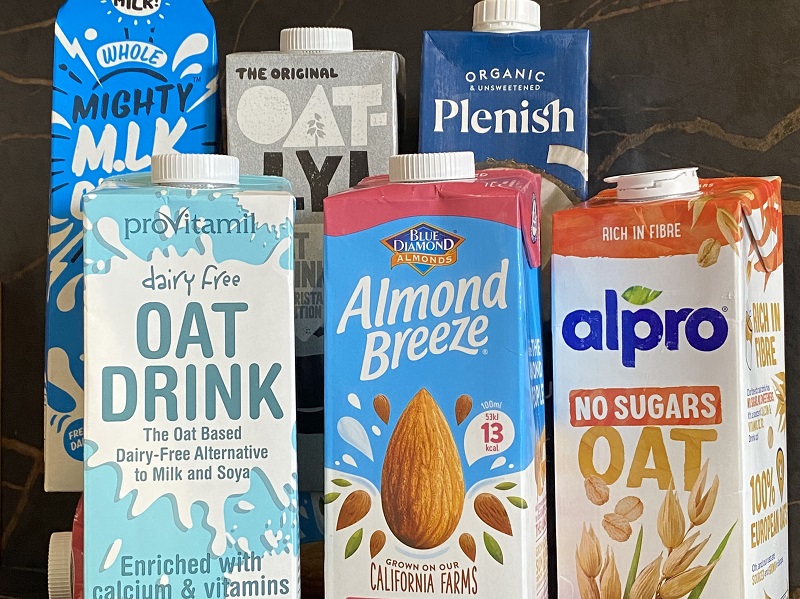Most serious athletes make their training hard (lots of high intensity) whereas someone who is slower, hates “getting out of puff” and who trains for longer is actually training the smartest for fat adaption – who knew?!
Back in May we hit a good spell of weather on Skye – perfect for a continuous enchainment along the Cuillin Ridge. As we were just 3 weeks from the summer solstice, there were plenty of daylight hours, so our main concern was fuelling ourselves …
And it was a long day; we arrived at the Sligachan Inn nearly 18 hours after setting off at 4am and my watch told me that I’d burnt 5000 calories. Over the years I’ve found that sugar (and caffeine) can make me feel jittery, even in small doses, plus anything sugary makes me thirsty. So I knew that I was going to avoid both for my best chance of constant energy on the ridge, especially as water would be limited. But 5000 calories – that’s a lot of food to cram down whilst on the move – so how did I do it?
I’m not much of an athlete but I do have an ace card!
When it comes to athleticism, I don’t have many advantages; I’m not fast or particularly strong, I have a smaller than average lung-capacity and a strong aversion to being out-of-breath! But, I have one ace card – I’m well adapted to burning fat for fuel. I’ve always found I can do this – so certainly it is partly genetic – but I’ve also spent most of my life climbing and mountaineering; years of fairly low-intensity, endurance activity, sometimes in a hypo-caloric state, could this have helped?
Fat Adapted – What, How?
It is widely accepted that we can burn fat as fuel while exercising at fairly low intensity but there is a growing acceptance that well-trained athletes can and do burn fat whilst exercising at higher intensity. And yes, we can actually train ourselves to become more “fat-adapted”.
I’m rubbish at training for anything – instead I tend to just turn up and hope for the best! But, in my favour, this past year I’ve been consistently clocking fell miles – and whilst on average it has only been a modest 12-14 hours or so per week it has included regular, steepish ascent. I also regularly exercise in a fasted state, which is actually normal for yoga practitioners but this year I’ve experimented with this on hill-days. And, through the winter I was out for much longer days, winter climbing. This requires a lot of energy, just to keep warm, and it can be especially difficult to eat, so it means continuing in a glycogen depleted state – one of the most significant drivers for aerobic adaptations. All these factors help us to become better “fat-adapted” or able to burn fat for fuel.
Benefits of Burning Fat for Fuel
Using fat for fuel has some significant advantages. Firstly, we have a lot of fat; even very lean athletes have around 100,000 calories of intramuscular fat! Conversely, even with maximum “carbo-loading”, stored glycogen will rarely even reach 2,000 calories. Secondly, burning more fat and less carbohydrate will lessen lactic acid production, meaning that our muscles can keep going longer and avoid that horrible burning sensation that comes just before complete fatigue.
Drawbacks
However, there are still lots of other variables to consider and potential drawbacks. In addition to how you train there’s also your basic physiology. Athletes with higher concentration of slow-twitch muscles will have a higher aerobic capacity and so will be able to burn fat at higher intensities of exercise. Conversely those with more fast-twitch muscles are less likely to become as well adapted.
Plus, if you have a mismatch of adaptation, intensity and fuel you could end up burning lean muscle – not a scenario that anyone wants! Even well adapted athletes need to add some carbohydrate to the mix but a great option is to combine this with protein and fat. Monitor your performance and if you are slowing down, have heavy legs, feel dizzy or have a headache then it is time to review your fuel both in terms of quantity and type. Ultimately it can take months or even years to refine your approach but adaptation for endurance is a slow process anyway.
Finally, most serious athletes make their training hard (lots of high intensity) whereas someone who is slower, hates “getting out of puff” and who trains for longer is actually training the smartest for fat adaption – who knew?!
What I ate!
As for what I ate. The night before I had a normal size meal – salmon fillet, puy lentils and a large salad drizzled with tahini. We left our accommodation at 3am so I had a small bowl of coconut yoghurt with fresh raspberries and a cup of matcha tea before leaving – that was all I could manage. For on the hill I took sliced tempeh, drizzled with tahini and sprinkled with sea-salt, an avocado and a couple of squares of Montezumas 100% dark chocolate broken into a small tub of mixed raw nuts (cashew & walnuts). I also had 2½ litres of water and a flask of herbal tea with me. We had three stops for food and drink and made a final stop, on the descent, to drink water. Meal timings were approximately 7am, 1pm and 4pm. My energy levels were consistent throughout the day and at no point did I feel weak or tired. I did sleep well that night though! The following day I felt good and went walking and exploring the marble pools, albeit at a leisurely pace! In terms of macro-nutrients my food choices were high in protein and fat but there was also carbohydrate in the mix. Many people forget that nuts are a powerhouse of protein, carbohydrate and fat, which is what makes them such a useful hill-food.
Take Homes
- Becoming fat adapted takes time – low intensity, long duration exercise with low or no carbohydrate intake can help to increase fat-burning adaptation.
- Every body is different and your ability to burn fat for fuel is dependent on various factors including genetics, predominant type of muscle fibres (fast or slow twitch), general state of fitness, type of activity, duration and intensity of activity.
- High intensity training in a fasted state is likely to lead to some lean-muscle being consumed for fuel so be super-careful to drop intensity for fasted training.
- Your body knows best; experiment with different types of food, vary meal timings and training timings and experiment with fasted exercise
- The physiology of endurance is complicated; if you are interested in finding out more then I would strongly recommend reading Kilian Jornet’s “Training for the Uphill Athlete” as well as Sport and Exercise Nutrition by Susan Lanham-New







